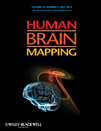
Aging Brain
Scope & Guideline
Transforming Understanding of the Aging Brain
Introduction
Aims and Scopes
- Neurodegeneration and Alzheimer's Disease Research:
The journal extensively covers research related to neurodegenerative diseases, especially Alzheimer's disease, focusing on molecular mechanisms, biomarkers, and therapeutic strategies. - Cognitive Aging and Memory:
A significant area of focus is the study of cognitive aging, memory processes, and the factors influencing these changes, including interventions and cognitive resilience. - Brain Structure and Function:
Research examining age-related changes in brain structure and function, including studies on neuroimaging, connectivity, and the impact of lifestyle factors on brain health. - Intervention and Rehabilitation Strategies:
The journal emphasizes the development and evaluation of interventions aimed at improving cognitive function and quality of life in older adults, including psychological and physical rehabilitation. - Molecular and Cellular Mechanisms of Aging:
Research exploring the underlying molecular and cellular changes associated with aging, including studies on inflammation, neuroplasticity, and the role of various biomarkers.
Trending and Emerging
- Role of Lifestyle Factors in Brain Aging:
There is a growing emphasis on understanding how lifestyle factors, such as diet, exercise, and social interaction, impact brain aging and cognitive health, reflecting a holistic approach to brain health. - Neuroinflammation and Immune Response:
Emerging research is increasingly focused on the role of neuroinflammation and the immune system in brain aging, indicating a shift towards understanding the biological underpinnings of cognitive decline. - Precision Medicine Approaches:
The journal is seeing a rise in studies applying precision medicine frameworks to aging and dementia, aiming to tailor interventions based on individual genetic, environmental, and lifestyle factors. - Innovations in Neuroimaging Techniques:
There is a trend towards utilizing advanced neuroimaging techniques to better understand brain structure-function relationships and their changes with aging, enhancing diagnostic capabilities. - Integration of Behavioral and Cognitive Interventions:
Research exploring the integration of behavioral and cognitive interventions is on the rise, focusing on enhancing cognitive resilience and functional outcomes in older adults.
Declining or Waning
- Focus on Single Disease Models:
There seems to be a waning interest in studies focusing solely on single disease models, such as specific types of dementia without considering broader aging contexts or multimorbidity. - Traditional Neuropsychological Assessments:
The reliance on traditional neuropsychological assessments appears to be decreasing in favor of more integrated, multi-modal approaches that consider lifestyle, environment, and neuroimaging data. - Generalized Aging Studies:
Research that broadly examines aging without specific focus on cognitive or neurological outcomes is less prevalent, as the field increasingly seeks targeted studies with clear implications for interventions.
Similar Journals

CEREBRAL CORTEX
Advancing knowledge in cortical neuroscience.CEREBRAL CORTEX, published by Oxford University Press Inc, is a premier journal dedicated to advancing the field of neuroscience, specifically focusing on the cellular, molecular, and cognitive aspects of cortical structure and function. With an impressive impact factor that situates it in the top quartile (Q1) of its categories for 2023, this journal holds significant relevance for researchers and professionals interested in the latest discoveries and methodologies in both Cognitive Neuroscience (ranked #31 out of 115) and Cellular and Molecular Neuroscience (ranked #48 out of 97). Operating without an open access model, it ensures rigorous peer review and dissemination of high-quality research from across the globe. Since its inception in 1991, CEREBRAL CORTEX has established itself as a critical platform for educators and inventors, pushing the boundaries of knowledge in understanding brain function and its implications for behavior. Researchers and students alike will find this journal an invaluable resource for both foundational and cutting-edge studies in neuroscience.

HUMAN BRAIN MAPPING
Elevating insights into brain mapping methodologies.HUMAN BRAIN MAPPING, published by Wiley, is a premier journal in the field of neuroscience, devoted to comprehensively advancing understanding of brain structure and function through innovative mapping techniques. With an impressive impact factor and ranked in the Q1 category across multiple relevant disciplines—including Anatomy, Neurology, and Radiology—this journal is recognized as a vital resource for researchers and professionals passionate about the complexities of the human brain. Founded in 1993 and continuously publishing groundbreaking research, HUMAN BRAIN MAPPING is essential for those looking to stay at the forefront of developments in anatomical and neurological research. Though it does not currently offer Open Access options, the journal remains committed to disseminating high-quality research that influences clinical practices and academic inquiry. Its esteemed position within Scopus highlights its significance; charting at the top percentiles across various medical and health fields serves as a testament to the critical contributions made by the authors and researchers involved. As it converges toward 2024, HUMAN BRAIN MAPPING continues to be the go-to platform for publishing pivotal insights into the intricacies of brain mapping methodologies and applications.

NEUROCHEMICAL RESEARCH
Transforming insights into impactful clinical practices.NEUROCHEMICAL RESEARCH, published by Springer/Plenum Publishers, is a pivotal journal in the fields of biochemistry, neuroscience, and cellular and molecular studies. With an impressive impact factor that positions it within the prestigious Q1 category in Biochemistry and Medicine and Q2 in Cellular and Molecular Neuroscience, it provides a robust platform for the dissemination of cutting-edge research findings. Since its inception in 1976, the journal has played a crucial role in bridging the gap between neurochemical processes and neurological health, making significant contributions to our understanding of brain function and disease. Researchers and professionals are encouraged to engage with a wealth of high-quality articles that not only advance the field but also inform clinical practices. Located in the heart of New York, the journal continues to uphold its reputation as a leader in promoting innovative research that is essential for both academic and applied sciences.

Brain Impairment
Illuminating pathways in behavioral neuroscience.Brain Impairment, published by Cambridge University Press, is a pivotal academic journal dedicated to advancing the understanding of neurological conditions and cognitive processes. With its ISSN 1443-9646 and E-ISSN 1839-5252, this esteemed journal has been at the forefront of research in the fields of Behavioral Neuroscience, Cognitive Neuroscience, and Neuropsychology since its inception in 2004. Covering a broad scope, it addresses critical insights into brain function, impairments, and therapies, making it a valuable resource for researchers, clinicians, and students alike. Brain Impairment holds various rankings, including Q4 in Behavioral Neuroscience and Q2 in Speech and Hearing, reflecting its significance in the academic community. While the journal operates under print access, its rich content serves as an essential reference for professional development and scholarly discussion in the UK and beyond. Researchers and practitioners can rely on this journal to provide cutting-edge research and reviews that inform clinical practice and shape future studies in neurology and cognitive neuroscience.

NATURE NEUROSCIENCE
Elevating Neuroscience Through Rigorous ScholarshipNATURE NEUROSCIENCE is a premier journal published by NATURE PORTFOLIO, focusing on cutting-edge research in the field of neuroscience. With an esteemed impact factor that reflects its significance in the academic community, this journal occupies an exceptional place in the 2023 Q1 category for neuroscience (miscellaneous) and boasts a leading Scopus rank of #1 out of 113 in general neuroscience, placing it within the top 1st percentile. Since its inception in 1998, NATURE NEUROSCIENCE has consistently delivered high-quality, peer-reviewed articles that contribute to our understanding of the nervous system, driving innovation and scholarship across disciplines. Although it does not offer open access, the journal remains a vital resource for researchers, professionals, and students seeking to stay at the forefront of neuroscientific discovery and discussion. Its editorial commitment to excellence ensures that it continually shapes the trajectory of neuroscience research well into 2024 and beyond, making it an indispensable asset for anyone passionate about the brain and its complexities.

BRAIN
Leading the Charge in Clinical Neurology AdvancementsBRAIN, published by Oxford University Press, stands as a preeminent journal in the realms of neurology and medicine, with a formidable impact factor reflecting its rigorous peer-reviewed standards and significant contributions to the field. With its ISSN 0006-8950 and E-ISSN 1460-2156, this esteemed publication spans over a century of exceptional research, converging from its historical roots in 1878 to current groundbreaking studies. BRAIN boasts a distinguished rank of #8 out of 400 in the Scopus category of Neurology (Clinical), placing it in the 98th percentile of institutions, indicative of its influence and reach. Operating under the Q1 category in both Medicine (Miscellaneous) and Clinical Neurology, the journal is dedicated to fostering interdisciplinary dialogue among researchers, clinicians, and students alike. With a focus on innovative findings and clinical advancements, BRAIN serves as a vital resource for those seeking to deepen their understanding of neurological disorders and the evolving landscape of medical research.

Brain Structure & Function
Connecting Structure to Function in NeuroscienceBrain Structure & Function is a premier peer-reviewed journal published by Springer Heidelberg, focusing on the intricate relationships between brain anatomy and its functional implications. With a significant presence in the academic community, the journal is recognized for its high impact, evidenced by its rankings in the Q1 categories of Anatomy and Histology and its commendable position in the Neuroscience field. It has successfully maintained a convergence of research and innovation from 2007 to 2024, providing critical insights that drive forward our understanding of the brain. The journal's outstanding metrics, including a ranking of #6 in Anatomy and #18 in Histology within Scopus, highlight its role in shaping modern research. Offering open access options, Brain Structure & Function ensures that its cutting-edge findings and methodologies are accessible to a broad audience of researchers, professionals, and students eager to contribute to the evolution of neuroscience. With its comprehensive scope and commitment to high-quality research, this journal is an essential resource for anyone invested in the complexities of brain structure and their functions.

PSYCHOLOGY AND AGING
Connecting empirical research with aging-related practices.Psychology and Aging, published by the American Psychological Association, is a premier journal dedicated to advancing the field of psychology as it relates to aging. ISSN 0882-7974 and E-ISSN 1939-1498, this esteemed journal has been a key resource since its inception in 1986 and continues to shape the discourse surrounding aging-related psychological phenomena. The journal boasts impressive rankings in various academic categories, placing in Q2 for Aging, Q1 for Geriatrics and Gerontology, and Q1 for Social Psychology in 2023, highlighting its significance in multiple disciplines. With Scopus rankings that position it within the top tier of psychology and medical journals, Psychology and Aging serves as a vital forum for researchers, professionals, and students alike, facilitating the exchange of rigorous empirical research and novel theoretical insights. This journal is instrumental in elucidating the complexities of psychological function across the lifespan, ultimately contributing to improved interventions and policies affecting older adults.

Cognitive Neurodynamics
Mapping the Pathways of Neurobiological Mechanisms.Cognitive Neurodynamics is a leading journal in the field of cognitive neuroscience, published by Springer in the Netherlands. With an ISSN of 1871-4080 and an E-ISSN of 1871-4099, this journal has established itself as a prominent platform for innovative research from its inception in 2007, continuing to enrich the academic landscape through 2024. Recognized for its significant contributions, Cognitive Neurodynamics holds a Q2 quartile ranking in cognitive neuroscience and impressively ranks #27 out of 115 in the Scopus database, placing it in the 76th percentile among its peers. While the journal is not open access, it offers a wealth of studies focusing on the intricate dynamics of cognitive processes and neurobiological mechanisms, making it essential reading for researchers, professionals, and students alike. Its objective is to bridge the gap between theoretical insights and practical applications, fostering a deeper understanding of cognition through multidisciplinary approaches. Explore the latest advancements in cognitive dynamics and contribute to the evolving dialogue within this fascinating field.

NEUROBIOLOGY OF AGING
Exploring the Intersection of Aging and NeurobiologyNEUROBIOLOGY OF AGING, published by Elsevier Science Inc, is a premier journal dedicated to advancing our understanding of the complex interactions between the aging process and neurobiological mechanisms. With an ISSN of 0197-4580 and E-ISSN 1558-1497, the journal has established itself as a critical resource in the fields of Aging, Developmental Biology, Geriatrics and Gerontology, Clinical Neurology, and Neuroscience. Boasting a Q1 ranking in multiple categories, the journal is positioned within the top echelons of scholarly publication, underscoring its significant impact with an impressive Scopus ranking in various subfields. Committed to disseminating high-quality, peer-reviewed research, NEUROBIOLOGY OF AGING welcomes original articles, reviews, and research notes aiming to uncover the underlying processes of aging on the nervous system, fostering collaboration among researchers, professionals, and students alike. Although primarily subscription-based, the journal continues to play a vital role in shaping the discourse on aging and neurobiology, making it an essential publication for those engaged in this dynamic field.